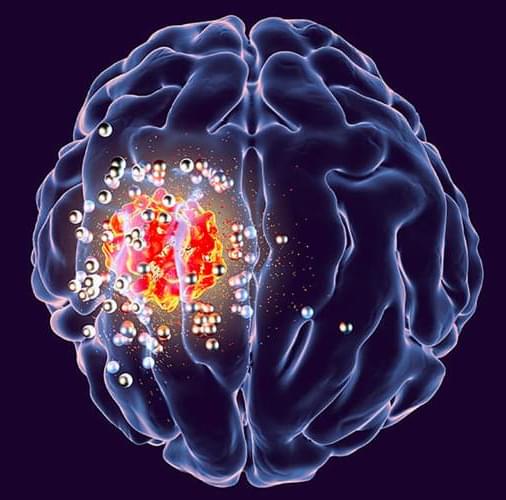Swytch bike/Twitter.
Boudway tried the user-friendly kit himself and shared his experience.


The technology system will enable the Yanghuopan Power Station in Yulin City, Shaanxi, to save 24,500 tonnes of coal and cut 54,100 tonnes of carbon emissions annually, claims Chinese media.
China claims the “world’s first” power plant equipped with a “natural direct cooling” (NDC) system is now connected to the grid in the Shaanxi Province of the country.
“The technology, described as ‘a revolution in industrial air cooling’ by local newspaper Shaanxi Daily, makes use of the natural airflow in the plant to guide the heat to the air condenser,” said the report.
PNK Photo/iStock.
This marks a “breakthrough” in power plant cooling technology for China, according to a report published by the state-run China Global Television Network (CGTN) on Friday.

It’s called the C/2022 E3 (ZTF) comet.
A comet that last appeared in the night sky during the Ice Age will soon make a reappearance in February 2023, according to a NASA statement published last week. Called the C/2022 E3 (ZTF) comet, it orbits the sun every 50,000 years. It will now pass within 26 million miles of Earth on February 1st, 2023.
It could also be visible to the naked eye in mid-to-late January. The comet can be seen using binoculars and low-level telescopes when the skies are clear.
NASA/Dan Bartlett.
Called the C/2022 E3 (ZTF) comet, it orbits the sun every 50,000 years. It will now pass within 26 million miles of Earth on February 1st, 2023.

Now picture a random object, or a scene from your childhood, and ask yourself the same questions. How vividly can you ‘see’ it in your mind?
Some people cannot see anything. Nothing. Their mind’s eye is blank. They experience a neural phenomenon called aphantasia.
Aphantasia is a condition in which a person cannot visualize mental images. In other words, when they attempt to imagine or think about something they cannot create an internal mental image or picture. Because of this, individuals who experience aphantasia can have a hard time recalling things like past experiences and the visual details associated with those memories. They also tend to have difficulty with tasks that require visualizing or imagining physical objects and how they move and rotate in space. This can have an impact on their spatial reasoning.

Mental health has become a widespread topic nowadays.
In the past, discussions concerning mental health were often hushed up or altogether swept under the rug. A gradual cultural change has led to openly considering mental health issues and eased qualms about doing so in publicly acknowledged ways.
You might give some of the credit for this change in overarching societal attitudes as an outcome of the advent of easily accessed smartphone apps that aid your personal mindfulness and presumably spur you toward mental well-being. There are apps for mindfulness, ones for meditation, ones for diagnosing your mental health status, ones for doing mental health screening, and so on.
People on social media are touting the use of generative AI such as ChatGPT as handy for interactively providing mental health advice. This is a worrisome trend. AI Ethics and AI Law are stressed out and cautioning that this is not a sound idea.

Senior corporate officers across the nation are wringing their hands. The 2023 economic climate is uncertain, but one thing is for sure—more layoffs are coming. In November 2022 alone, more than 80,000 layoffs were announced from tech giants like Meta, Amazon, and Twitter, as well as conventional companies like PepsiCo, Goldman Sachs, and Ford.
Downsizing is one of the most difficult things that leaders ever have to accomplish.
AI can offer objective performance evaluation to help managers decide who stays and who goes. AI software startups like GoFusion Perfacto and Entomo use data from employee productivity, attendance record, and other KPIs to help separate the star players from the rest on the basis of objective performance metrics.
This approach provides department heads a justification for their downsizing decisions, freeing both leaders and teams of the worst ills of purely subjective decision-making.
When put under pressure to downsize, it is human nature for managers to make decisions biased towards short-term needs. Retaining the talent most critically needed for your organization’s core business activities today makes sense in theory. But when that happens across the board, it can leave you unprepared to take on your most important future-facing strategic initiatives.

The size of an economy is measured by GDP (Gross Domestic Product). GDP is calculated by adding up the value of all goods and services produced within a country’s borders in a given year. This includes the value of goods and services produced by both the government and the private sector. GDP is typically measured in monetary terms, using current market prices for goods and services. GDP is used as a measure of the size and strength of an economy, as well as its overall level of economic activity. It is often used to compare the economies of different countries and to track economic growth over time.
Full Story:
One of the factors limiting the GDP is the number of skilled workers. Can AI usher in an era where that factor is no longer the limitation? This article explores how AI has the potential to increase the GDP and eventually lead to a limitless economy.

Nothing can go faster than light. It’s a rule of physics woven into the very fabric of Einstein’s special theory of relativity. The faster something goes, the closer it gets to its perspective of time freezing to a standstill.
Go faster still, and you run into issues of time reversing, messing with notions of causality.
But researchers from the University of Warsaw in Poland and the National University of Singapore have now pushed the limits of relativity to come up with a system that doesn’t run afoul of existing physics, and might even point the way to new theories.

𝐒𝐭𝐚𝐧𝐟𝐨𝐫𝐝 𝐫𝐞𝐬𝐞𝐚𝐫𝐜𝐡𝐞𝐫𝐬 𝐭𝐡𝐢𝐧𝐤 𝐚 𝐰𝐢𝐫𝐞𝐥𝐞𝐬𝐬 𝐛𝐫𝐚𝐢𝐧 𝐢𝐦𝐩𝐥𝐚𝐧𝐭 𝐜𝐨𝐮𝐥𝐝 𝐫𝐞𝐦𝐨𝐯𝐞 𝐭𝐮𝐦𝐨𝐫𝐬
𝙍𝙚𝙨𝙚𝙖𝙧𝙘𝙝𝙚𝙧𝙨 𝙖𝙩 𝙎𝙩𝙖𝙣𝙛𝙤𝙧𝙙 𝙈𝙚𝙙𝙞𝙘𝙞𝙣𝙚 𝙝𝙖𝙫𝙚 𝙙𝙚𝙫𝙚𝙡𝙤𝙥𝙚𝙙 𝙖 𝙨𝙢𝙖𝙡𝙡 𝙬𝙞𝙧𝙚𝙡𝙚𝙨𝙨 𝙙𝙚𝙫𝙞𝙘𝙚 𝙩𝙝𝙖𝙩 𝙘𝙤𝙪𝙡𝙙 𝙬𝙞𝙧𝙚𝙡𝙚𝙨𝙨𝙡𝙮 𝙧𝙚𝙢𝙤𝙫𝙚 𝙙𝙚𝙖𝙙𝙡𝙮 𝙗𝙧𝙖𝙞𝙣 𝙩𝙪𝙢𝙤𝙧𝙨.
Researchers think a wireless implant to treat brain tumors could eliminate hospital visits for cancer treatment. [Image courtesy of Stanford Medicine]
According to the researchers, brain tumors are some of the most deadly and difficult-to-treat cancers. Glioblastoma, an aggressive form of brain tumor, kills more than 10,000 Americans a year.
